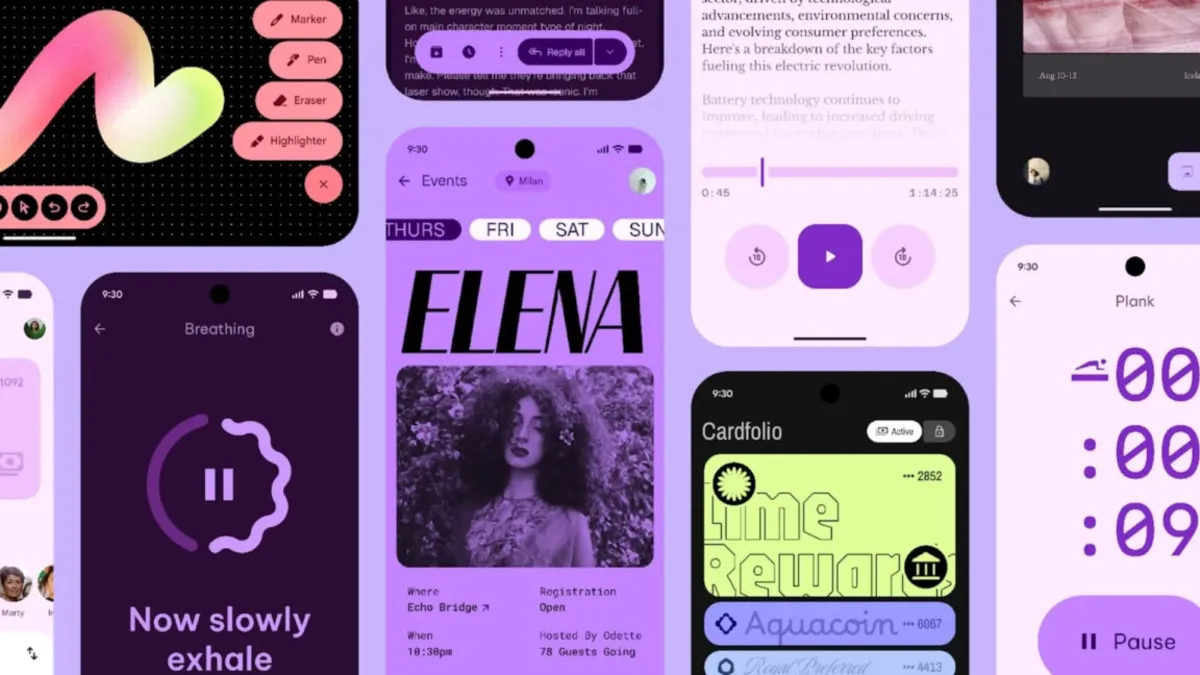
Last week, Google inadvertently showcased its significant Android design refresh, now officially known as Material 3 Expressive. This new interface aims to enhance the user experience starting with the Android OS and will eventually extend to the entire Google app ecosystem, including popular applications like Gmail and Google Photos. Material 3 Expressive infuses a more vibrant and lively aesthetic into the interface, building upon the foundation laid by the Material You design system introduced four years ago.
Material 3 Expressive brings a bolder approach to design, incorporating springy animations, brighter color palettes, and new geometric shapes. The design is the culmination of extensive user research, which involved over 18,000 participants. Google conducted studies to understand how users efficiently process information on their devices, leading to design decisions aimed at facilitating quicker and easier interactions. As a result, certain UI elements are now larger and more prominent, allowing users to locate crucial buttons up to four times faster compared to previous Material You interfaces.
With Material 3 Expressive, users can expect an abundance of animations in upcoming versions of Android. The playful, springy aesthetic is designed to feel more natural and engaging, with more UI elements responsive to dynamic haptics. Additionally, the color scheme is experiencing a significant overhaul; however, it is not a complete departure from Material You. The updated theming engine will select bolder colors to enhance visual separation between UI components, making them more distinguishable.
Google is also revamping Android's typography with increased contrast between headers and body text. This adjustment will appear across various Google applications, aiding users in navigating and processing information more swiftly. Furthermore, users will notice a diverse range of button shapes and varying text weights for labels. The status bar icons will also undergo a transformation to enhance readability.
One of the most noticeable changes with Material 3 Expressive will be in the notification shade and quick settings. Google plans to allow users to pin more controls to the compact view, and quick settings tiles will now be resizable for added convenience. To further enhance the visual experience, the background of the notification shade will feature a blur effect that complements the user’s background image.
While Android 16 is on the horizon, with some aspects of Material 3 Expressive already evident in the latest beta versions, the current default UI remains the familiar Material You interface. Android 16 is expected to launch in June, but the complete rollout of Material 3 Expressive will occur later this year for Pixel phones and the Pixel Watch through an update.
Similar to Material You, Material 3 Expressive is an open design framework, allowing Google's partners to integrate it into their Android skins. Developers will also have access to new design templates and animation APIs to ensure their apps harmonize with the Material 3 Expressive aesthetic. However, historical trends indicate that manufacturers like Samsung and OnePlus may not fully adopt Google's design preferences. While Motorola has typically aligned more closely with Google's design language, even they did not completely embrace Material You.
If you’re excited about the vibes of Material 3 Expressive, it seems that owning a Pixel device will be necessary to enjoy the full experience. As Google continues to refine its design language, users can look forward to a more engaging and visually appealing interface across its applications.